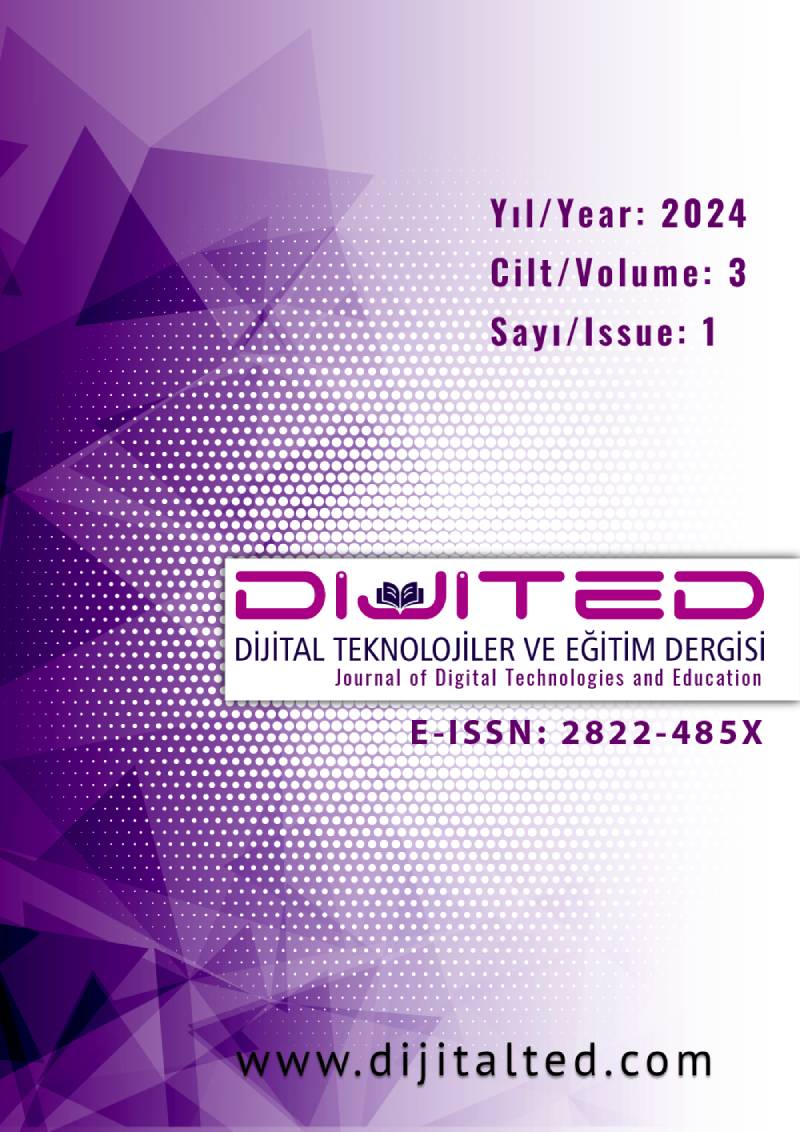Kategorik verilerde sınıf dengesizliği durumunda makine öğrenimi algoritmalarının karşılaştırılması: Öğrencilerin başarı durumları üzerine bir uygulama
DOI:
https://doi.org/10.5281/zenodo.12637330Anahtar Kelimeler:
Eğitimde başarı tahmini, makine öğrenme algoritmaları, sınıf dengesizliğiÖzet
Makine öğrenme algoritmaları, eğitim bilimlerinde öğrenci performansını değerlendirmek üzere çeşitli amaçlar doğrultusunda uygulanmaktadır. Eğitim alanındaki veri setlerinin kategorik verilerden oluşması, sınıf dengesizliği sorununda alternatif veri türetme tekniklerinin kullanılmasını gerektirmektedir. Bu çalışma, bu durumu ele alarak öğrencilerin başarı durumlarını tahmin etmede kullanılan çeşitli makine öğrenimi algoritmalarının performanslarını karşılaştırmayı amaçlamaktadır. Uygulamada sınıf dengesizliğini çözmek üzere SmoteNC tekniğinden yararlanılmış ve analiz bulguları, beş farklı makine öğrenme tekniği ile değerlendirilmiştir. Veri analizi sonuçları, sınıf dengesizliği giderildiği takdirde, sınırlı sayıda gözlem içeren verilerde makine öğrenme algoritmalarının başarıyla uygulanabileceğini göstermektedir.
Referanslar
Awad, M., Khanna, R., Awad, M., & Khanna, R. (2015). Support vector machines for classification. Efficient learning machines: Theories, concepts, and applications for engineers and system designers, 39-66.
Breiman, L. (2001). Random Forests. Machine Learning, 45(1), 5-32.
Gonzalez, M., Costa, E., & Marques, J. (2022). A two-phase machine learning approach for predicting student outcomes. Educational Data Mining, 14(3), 112-126. https://doi.org/10.1145/3361335.3361345.
Halde, R. R. (2016, September). Application of Machine Learning algorithms for betterment in education system. In 2016 International Conference on Automatic Control and Dynamic Optimization Techniques (ICACDOT) (pp. 1110-1114). IEEE.
He, L., & Tafti, D. K. (2019). A supervised machine learning approach for predicting variable drag forces on spherical particles in suspension. Powder technology, 345, 379-389.a
Hernandez-Leal, P., Hussain, Z., & Dragan, L. (2022). Predicting student performance in a blended learning environment using machine learning techniques. Computers & Education, 176, 104360. https://doi.org/10.1016/j.compedu.2021.104360.
Islahulhaq, W. W., & Ratih, I. D. (2021). Classification of non-performing financing using logistic regression and synthetic minority over-sampling technique-nominal continuous (SMOTE-NC). Int. J. Adv. Soft Comput. Appl, 13, 115-128.
Jones, P., Williams, K., & Thomas, L. (2023). A systematic review of the literature on machine learning application in predicting student academic performance. Decision Analytics Journal, 7, 100204. https://doi.org/10.1016/j.daj.2023.100204.
Karbasi, M., Bahrami, S., Salehi, M., & Alizadeh, H. (2021). Predicting academic success in higher education: Literature review and best practices. International Journal of Educational Technology in Higher Education, 18(1), 1-14. https://doi.org/10.1186/s41239-021-00278-6.
Kuhn, M. (2008). Building Predictive Models in R Using the caret Package. Journal of Statistical Software, 28(5), 1–26. https://doi.org/10.18637/jss.v028.i05.
Lopez, V., Luna, J. M., & Romero, C. (2021). Enhancing prediction of student success: Automated machine learning approaches. Information Fusion, 65, 52-60. https://doi.org/10.1016/j.inffus.2020.07.009.
Menon, H. K. D., & Janardhan, V. (2021). Machine learning approaches in education. Materials Today: Proceedings, 43, 3470-3480.
Mukherjee, M., & Khushi, M. (2021). SMOTE-ENC: A novel SMOTE-based method to generate synthetic data for nominal and continuous features. Applied System Innovation, 4(1), 18.
Orji, F. A., & Vassileva, J. (2022). Machine learning approach for predicting students academic performance and study strategies based on their motivation. arXiv. Published online October 15, 2022. https://doi.org/10.48550/arXiv.2210.08186.
R Core Team (2024). R: A Language and Environment for Statistical Computing. R Foundation for Statistical Computing, Vienna, Austria. https://www.R-project.org.
Schonlau, M. (2005). Boosted regression (boosting): An introductory tutorial and a Stata plugin. The Stata Journal, 5(3), 330-354.
Shen, S. L., Zhang, N., Zhou, A., & Yin, Z. Y. (2022). Enhancement of neural networks with an alternative activation function tanhLU. Expert Systems with Applications, 199, 117181.
Smith, J., Doe, J., & Brown, A. (2021). Predicting academic success of college students using machine learning algorithms. Journal of Educational Computing Research, 59(4), 671-690. https://doi.org/10.1177/07356331211012345.
Şengür, D. (2013). Öğrencilerin Akademik Başarılarının Veri Madenciliği Metotları ile Tahmini. Fırat Üniversitesi, Eğitim Bilimleri Enstitüsü, Doktora Tezi.
Wang, Q., & Zhang, L. (2012). Least squares online linear discriminant analysis. Expert Systems with Applications, 39(1), 1510-1517.
Wang, Y., Yu, Y., & Hu, Y. (2020). Supervised machine learning algorithms for predicting student dropout and academic success. Education Sciences, 10(5), 134. https://doi.org/10.3390/educsci10050134.
Wongvorachan, T., He, S., & Bulut, O. (2023). A comparison of undersampling, oversampling, and SMOTE methods for dealing with imbalanced classification in educational data mining. Information, 14(1), 54.
Yan, Y. (2016). MLmetrics: Machine learning evaluation metrics (R package version 1.1.1). Retrieved from https://CRAN.R-project.org/package=MLmetrics
Yılmaz, N., & Şekeroğlu, B. (2019, August). Student performance classification using artificial intelligence techniques. In International Conference on Theory and Application of Soft Computing, Computing with Words and Perceptions (pp. 596-603). Cham: Springer International Publishing.
Yılmaz, E., Altıkardeş, Z. A., & Erdal, H. (2023). Higher Education Planning and Decision Support System with Multi-Class and Imbalanced Educational Dataset: A Case Of Technology Faculty. Gazi Journal of Engineering Sciences (GJES), 9(1).
Yağci, M., Rebai, I., & Eltahir, M. (2020). Role of convolutional features and machine learning for predicting student academic performance from MOODLE data. PLOS ONE, 15(10). https://doi.org/10.1371/journal.pone.0240991.ms.
İndir
Yayınlanmış
Nasıl Atıf Yapılır
Sayı
Bölüm
Lisans
Telif Hakkı (c) 2024 Dijital Teknolojiler ve Eğitim Dergisi

Bu çalışma Creative Commons Attribution 4.0 International License ile lisanslanmıştır.
- Özet 467
- PDF 112









